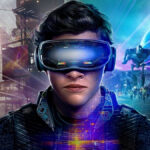You’re walking down a busy street when your phone buzzes. You look at the screen, and suddenly the world changes. In the shop window next to you, you see yourself wearing a pair of cool sunglasses. You can turn your head to see how they look from different angles, all without entering the store. This isn’t science fiction – it’s Augmented Reality (AR) in action.
Thank you for reading this post, don't forget to subscribe!
AR adds digital elements to the real world. It’s changing how we shop, learn, and see things around us. Imagine classrooms where dinosaurs walk between desks or hospitals where doctors can see inside patients without surgery. That’s the power of AR.
What is AR?
Augmented Reality (AR) is a technology that blends the real world with the digital world. It adds digital information to what you normally see. Imagine looking at the world through your phone’s camera or special glasses, and seeing extra information or images appear on top of what’s actually there.
For example:
- You could point your phone at a street, and see floating arrows showing you which way to walk.
- You might look at a restaurant and see its menu appear in the air next to it.
- While shopping, you could see how a piece of furniture would look in your home before buying it.
Augmented Reality 2023
— I▲N CURTIS (@XRarchitect) December 18, 2023
A compilation of my favorite real-time AR experiences from this year.
Thankful for all the amazing people I met along the way 🙏 the future is here. pic.twitter.com/fVrXridgoe
AR doesn’t replace the real world – it adds to it. It’s like having a digital layer on top of reality that gives you more information or lets you interact with your surroundings in new ways.
You’ve probably already used AR if you’ve played Pokémon Go or used filters on Snapchat that add things to your face. It’s becoming more common in apps and is used in fields like education, shopping, and entertainment.
The key thing to remember is: AR blends digital stuff with the real world you see around you.
Here are some everyday apps that use AR:
- Snapchat and Instagram filters: These popular social media apps use AR to overlay fun, animated effects onto your face or the real world.
- IKEA Place: This app lets you virtually place IKEA furniture in your home to see how it looks before you buy it.
- Google Translate: You can point your phone’s camera at a foreign language text, and the app will translate it in real-time.
- Makeup apps: Many makeup apps use AR to let you try on different makeup looks virtually before you apply them.
The Price of Progress: AR’s Dark Side
AR revolution could change everything from education to healthcare to entertainment. It’s not just about adding digital stuff to our world. It’s about creating a new reality where digital and physical merge.
1. Surveillance State:
- Constant monitoring: AR glasses could be mandated, allowing authorities to monitor citizens’ every move and interaction.
- Social credit systems: AR could be used to enforce social credit systems, with individuals’ actions and behaviours directly affecting their standing in society.
2. Information Control:
- Controlled narratives: Governments could use AR to disseminate propaganda and control the information citizens receive.
- Selective reality: AR could be used to create alternate realities, making it difficult to distinguish between truth and fiction.
3. Social Isolation:
- Virtual connections: AR could lead to increased social isolation as people prefer to interact with virtual friends and experiences.
- Digital addiction: Overreliance on AR could lead to addiction and mental health problems.
4. Economic Inequality:
- Digital divide: Those who cannot afford AR technology could be further marginalized, creating a digital divide.
- Corporate control: Powerful corporations could use AR to manipulate consumer behaviour and maintain their dominance.
5. Loss of Human Connection:
- Dehumanization: AR could lead to a loss of empathy and human connection as people become more focused on virtual experiences.
- Emotional detachment: Constant exposure to simulated emotions could make it difficult to experience genuine emotions.
Brief History of AR Till 2024
To my future self, this is for you. Today you feel like AR revolution has come a long way – But remember it’s just a start. It started with clunky devices like Google Glass. Now we have sleek tools like Apple’s Vision Pro. These changes are reshaping how we work, play, and connect with others.
| Year | Event | Description |
| 1968 | Sensorama | Morton Heilig creates a multi-sensory device that simulates sights, sounds, smells, and tactile sensations. |
| 1980 | Head-Mounted Display | Ivan Sutherland develops the first head-mounted display, laying the foundation for AR devices. |
| 1990 | Virtual Fixtures | The US Air Force develops the Virtual Fixtures system, an early AR application for manufacturing. |
| 1992 | ARToolkit | The ARToolkit software development kit is released, making AR development more accessible. |
| 2000 | Pokémon Go | The game uses AR to overlay digital creatures onto the real world, introducing AR to a mass audience. |
| 2010 | Google Glass | Google releases its AR glasses, sparking interest and debate about the future of AR. |
| 2016 | Microsoft HoloLens | Microsoft releases its HoloLens, a standalone AR headset. |
| 2021 | Apple Vision Pro | Apple announces its Vision Pro headset, promising a new era of AR and VR. |
Conclusion
AR revolution is here, and it’s growing fast. It will change how we see and interact with the world. The next time your phone buzzes, remember – you might be stepping into a world where imagination and reality mix in amazing new ways. However, as with any super power, the AR revolution also carries the risk of misuse and unintended consequences. It is imperative that we approach the development and deployment of AR with caution and foresight, ensuring that its benefits are maximized while its risks are mitigated.













